Research Experience
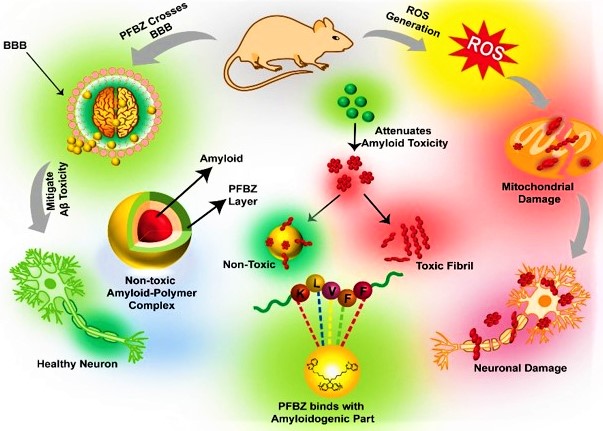
Status: Published, ACS Chem. Neurosci. 2020, 11, 3277–3287
A new benzimidazole functionalized polyfluorene was discovered to form nanodots in aqueous media, infiltrate the BBB, and protect brain cells against amyloid-mediated neurotoxicity in a wild type mouse model. Using the SH-SY-5Y neuroblastoma cell line, the mechanism of neuroprotection was investigated further. It was discovered that amyloid oligomers destroy neurons by causing mitochondrial dysfunction caused by ROS. The polymeric probe, on the other hand, acts as a chaperone, preferentially binding with the amyloidogenic domain to limit the process of oligomerization, further inhibiting a metabolic pathway that leads in ROS-mediated mitochondrial dysfunction.
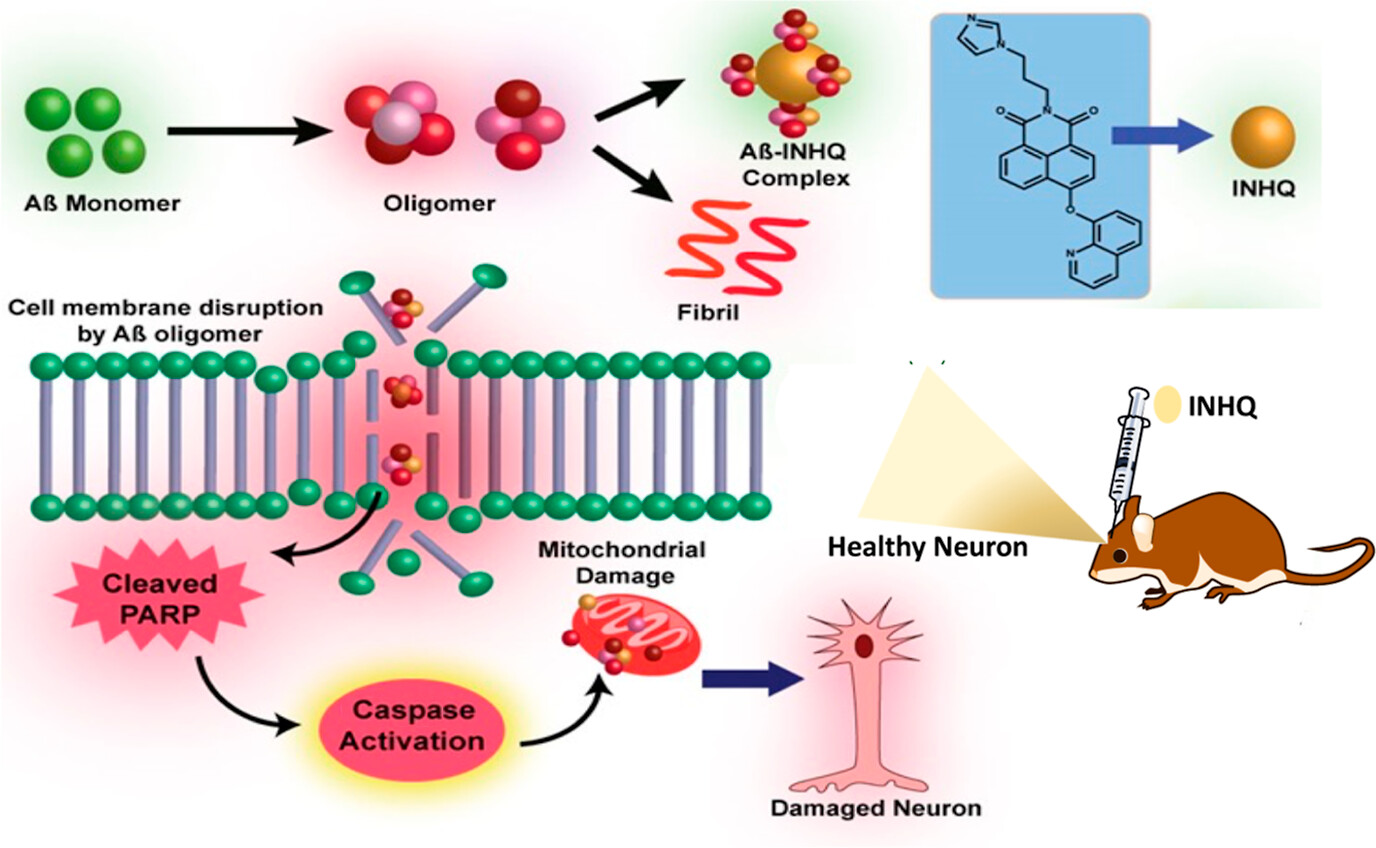
Status: Published, ACS Appl. Bio Mater. 2023, 6, 10, 4383–4391
We've also designed a small molecule-based therapeutic probe that interacts with amyloid-beta electrostatically. The simulation and NMR techniques were utilised to investigate the details of the interaction between the molecule and the amyloid. The probe suppresses a cascade of neurochemical events that leads to caspase-mediated neuronal destruction. The molecule is also permeable to the blood-brain barrier and lowers internal bleeding caused by amyloid oligomers, as demonstrated in a wild-type mouse model.
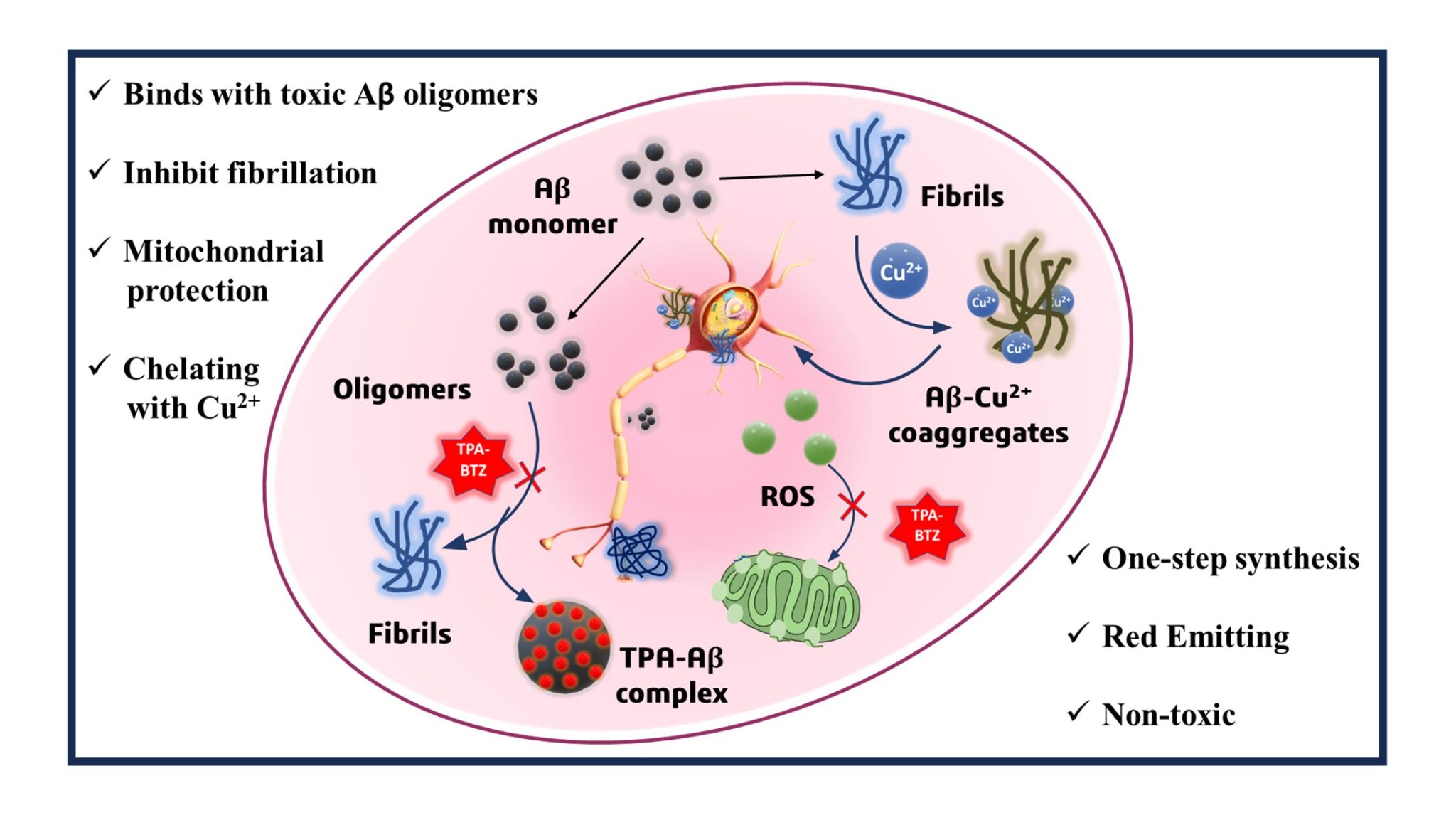
Status: Published, ACS Chem. Neurosci. 2024, 15, 2, 268–277
TPA-BTZ, a multitargeted probe with benzothiazole for amyloid targeting, nitrile group for hydrogen bonding, and metal chelation, is designed to prevent peptide aggregation in Aβ 16-21 as well as Aβ . It effectively chelates Cu(II) from Aβ 40, regulating peptide aggregation and preventing Aβ-induced apoptosis by scavenging ROS and protecting mitochondria.
Rationally Design and Synthesis of Multipotent Small Molecule:
We have synthesized a series of small molecules with different targeting groups. Then we conducted a theoretical study to find the best-fitting molecule for the amyloid-beta protein and confirm the role of various substituents in these molecules. Because of this fluorescent core's AIE behavior and high S/N ratio, we chose to synthesize these molecules and compare the reactivity with Aβ. Photophysical and biophysical studies revealed the therapeutic efficacy of the molecule. Furthermore, we have gone through the literature survey and found that these molecules have transistor properties, which will help the development of the device. (Status: Submitted)
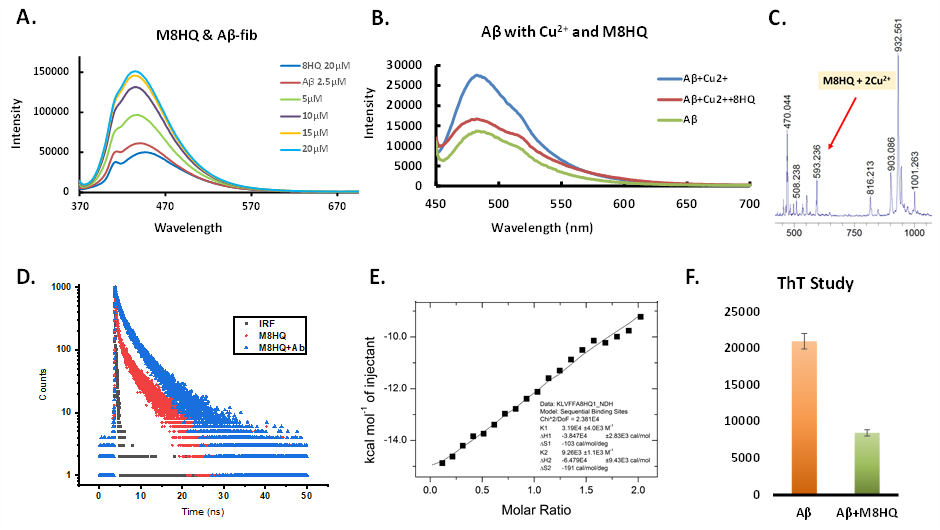
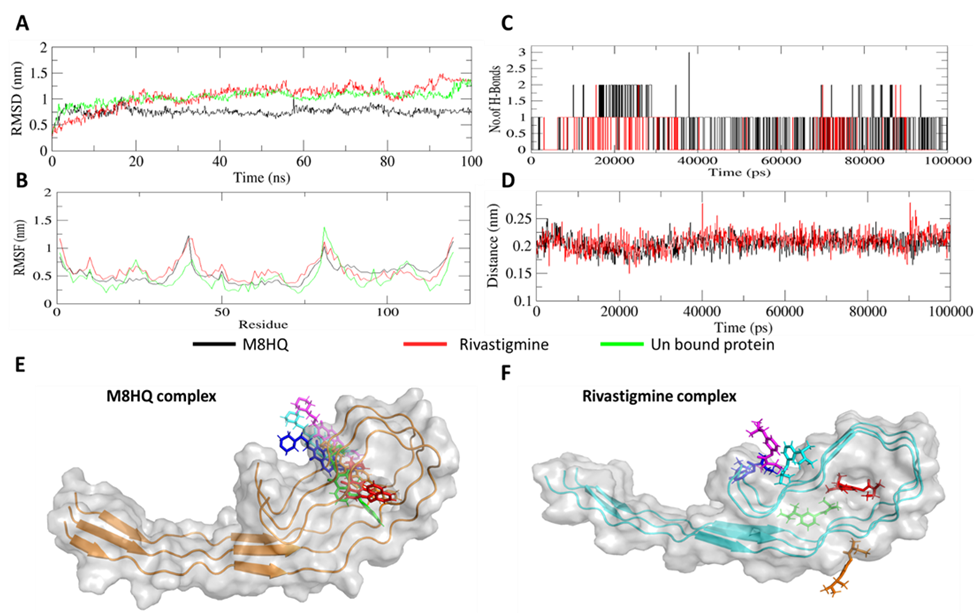

Morphological analysis of M8HQ molecule and amyloid beta fibrils through FETEM
